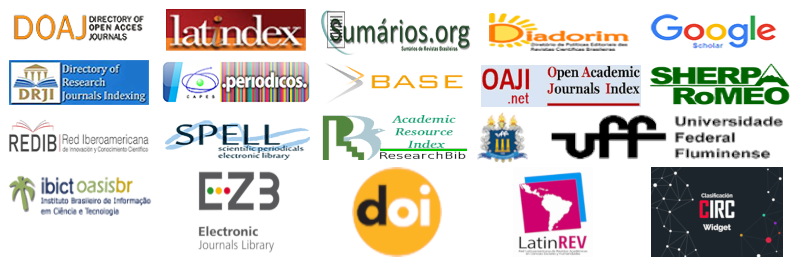Particularities in financing tools: A case study of an Agency for Science, Technology and Innovation of Rio de Janeiro State, Brazil
Particularities in financing tools: A case study of an Agency for Science, Technology and Innovation of Rio de Janeiro State, Brazil
DOI:
https://doi.org/10.20401/rasi.6.2.438Keywords:
Hélice Tríplice, Política de CTI, InovaçãoAbstract
Abstract: This work aims to analyze the objectives and interactions of innovation financing tools from a point of view of a technology, research and innovation foundation. It brings as subject the case of the Technology, Research and Innovation Foundation of the State of Rio de Janeiro (FAPERJ), and its incorporation of a Technology Board. Working side by side with a Scientific Board, it faces the challenge of interact, finance, and boost innovation, whereas the Foundation carries more than 40 years of basic research funding (1980 until 2019) the financing of innovation activities was incorporated in 2002. With the R&D activities in Brazil centered on public University, Research Institutes and only a small presence in companies (only 5% of the innovative companies perform R&D), FAPERJ’s faces the challenge of create financing tools that improves the interaction between these actors. The sample analyzed in this study relates the eligibility criteria used in the FAPERJ’s Technological Development Support (ADT) with similar and inspiring program, the United States of America Small Business Innovation Research (SBIR). As result, we have found the lack of incentives for interaction between universities and business sector, showing that only a small part of the projects financed by FAPERJ can reach the commercialization.
Downloads
References
Cross, D.; Thomson, S.; Sinclair, A. (2018). Research in Brazil: a report for CAPES by Clarivate Analytics. Clarivate Analytics. Disponível em:
<https://www.capes.gov.br/images/stories/download/diversos/17012018-CAPES-InCitesReport-Final.pdf> Acess in: apr. 01 2019.
WEB OF SCIENCE GROUP. (2018). Research in Brazil: Funding excellence. Disponível em: <https://jornal.usp.br/wp-content/uploads/2019/09/ClarivateReport_2013-2018.pdf> Acess in: oct. 12 2019.
GOVERNO DO ESTADO DO RIO DE JANEIRO. Decreto nº 3.290, de 16 de junho de 1980. Cria a Fundação Carlos Chagas Filho de Amparo à Pesquisa do Estado do Rio de Janeiro (FAPERJ). Disponível em: <http://www.faperj.br/downloads/decreto_3290.pdf>. Acess in: apr. 01 2019.
IBGE. (2015). Pesquisa de Inovação (PINTEC). In Pesquisa de Inovação 2014. https://doi.org/ISSN 0101-4234
OECD/Eurostat/EU. (1997). Proposed Guidelines for Collecting and Interpreting Technological Innovation Data (OECD). https://doi.org/10.1787/9789264192263-en
OECD. (2015). Frascati Manual 2015: Guidelines for Collecting and Reporting Data on Research and Experimental Development. In The Measurement of Scientific, Technological and Innovation Activities. https://doi.org/10.1787/9789264239012-en
Quintal, R. S., & Terra, B. R. C. dos S. e S. R. (2014). Políticas organizacionais de ciência, tecnologia e inovação e gestão da propriedade industrial: uma análise comparativa em Instituições de Pesquisa. Gestão & Produção. https://doi.org/10.1590/0104-530x1053/13
World Intellectual Property Organization (2018). Global innovation index 2018: energizing the world with innovation. Ithaca, Fontainebleu and Geneva: Cornell University; The Business School for the World; World Intelectual Property Organization. Disponível em: <https://www.globalinnovationindex.org/home> Acess in: apr. 01 2019.
Downloads
Published
Issue
Section
License
Copyright (c) 2020 Review of Administration, Society and Innovation

This work is licensed under a Creative Commons Attribution 4.0 International License.
RASI, in accordance with Law No. 9,610 of February 19, 1998, which amends, updates and consolidates Brazilian copyright law and makes other provisions, adopts the following conditions of the Copyright Assignment:
1. RASI maintains, with the transfer of copyrights, the possession of rights over the content published;
2. The author retains his moral rights of the content, including the right to be identified as the author whenever the content is published;
3. Despite the attribution of copyright, the author retains the right to reuse the material in future collections of his own work without encumbrance. The acknowledgments of the previous publication in the RASI are the only requirements in such cases;
4. The author may make photocopies of the content, or distribute it by electronic mail or fax, provided that they are intended for their own classes and for the purpose of meeting research objectives, provided that: (a) such copies are not resold and (b) reference to the original source of the publication and the name of the RASI are clearly indicated on all copies made of the document.











